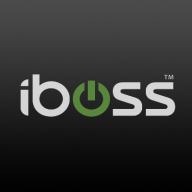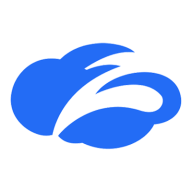


Zscaler Zero Trust Exchange Platform and Symantec SASE are competing products in the secure access solutions category. Zscaler may have the upper hand due to its robust security features, while Symantec's integration options offer strong competition.
Features: Zscaler Zero Trust Exchange Platform is noted for strong security protocols, making it highly effective against cyber threats. It offers scalability and a wide range of security services. Symantec SASE offers comprehensive integration capabilities and flexibility, ensuring smooth compatibility with existing infrastructures. It also provides extensive integration options valuable for diverse IT environments.
Ease of Deployment and Customer Service: Zscaler features a straightforward deployment process with robust customer support, which helps in quick implementation and problem resolution. Symantec SASE has a flexible deployment model, concentrating on administrative ease and integration, though it might take more setup time. Zscaler's user experience is beneficial, but Symantec provides flexibility for custom solutions.
Pricing and ROI: Zscaler Zero Trust Exchange Platform generally has a higher initial setup cost but offers a strong ROI due to its advanced security and performance. Symantec SASE is often more cost-effective upfront and presents a balanced ROI by leveraging its integration capabilities. Although Zscaler's costs are higher, its value through enhanced security features is advantageous, while Symantec's affordability could be appealing for budget-focused buyers.
| Product | Market Share (%) |
|---|---|
| Zscaler Zero Trust Exchange Platform | 11.3% |
| iboss | 2.1% |
| Symantec SASE | 0.1% |
| Other | 86.5% |


| Company Size | Count |
|---|---|
| Small Business | 6 |
| Midsize Enterprise | 6 |
| Large Enterprise | 5 |
| Company Size | Count |
|---|---|
| Small Business | 16 |
| Midsize Enterprise | 11 |
| Large Enterprise | 41 |
Iboss offers a comprehensive cloud-based security platform valued for its scalability and autonomous features, ensuring robust security with easy deployment and management capabilities.
Renowned for its robust security architecture, Iboss integrates seamlessly within diverse networks, delivering efficient granular filtering and advanced content categorization. Its single pane of glass console provides ease of management, allowing rapid scalability suitable for rapidly deploying environments. Operates in BYOD setups due to inline filtering without device installation. Integration with cloud-based applications enhances user control, and features like SASE, SSL inspection, and ChatGPT risk protection stand as highlights. Despite its strengths, users have pointed out areas for enhancement like direct navigation in reports, SSL decryption, and better cloud integration while having room to improve data loss prevention.
What are the most important features of Iboss?The usage of Iboss spans educational institutions, specifically K-12, to enforce internet policies, protect data, and support remote work environments. It provides web filtering and security frameworks to ensure safe browsing. Its platform-as-a-service model offers flexibility for both cloud-based and on-premises requirements, integrating seamlessly to deliver enhanced security features suitable for various deployment needs including zero trust, CASB, and network security for work-from-home setups.
Symantec SASE is a powerful cloud-based security solution that simplifies network management and enhances security posture for organizations. Its primary use case is to provide secure access to enterprise applications from any location or device. The most valuable functionality of Symantec SASE is its ability to unify multiple security solutions into a single platform. It offers a comprehensive range of security services, including cloud access security broker (CASB), secure web gateway (SWG), zero-trust network access (ZTNA), and firewall as a service (FWaaS). Symantec SASE helps organizations by providing a secure and seamless user experience while reducing the complexity of network security management. It eliminates the need for multiple point solutions, simplifies policy enforcement, and offers comprehensive visibility and control over network traffic. Additionally, its cloud-native architecture ensures scalability and flexibility, allowing organizations to adapt to changing business requirements. Symantec SASE is an essential solution for any organization looking to enhance security posture, streamline network management, and enable secure remote access to enterprise applications and data.
Zscaler Zero Trust Exchange enhances security with seamless cloud-based connectivity and VPN-less operation, offering integration with multiple identity providers and advanced security features, suitable for remote work environments.
Zscaler Zero Trust Exchange provides secure, adaptive connectivity without traditional VPNs, allowing organizations to replace legacy systems and bolster remote work security. The platform offers cloud-based protection, single sign-on, dynamic URL categorization, and scalable solutions. While advanced security features like DLP and threat protection enhance data protection, users may face issues with speed, connectivity, and some customization options. Integration challenges, latency due to multi-tenant hosting, reporting delays, and licensing costs require consideration. It supports secure internet access and private application security, ensuring traffic control and data compliance.
What are the key features of Zscaler Zero Trust Exchange?Zscaler Zero Trust Exchange is deployed across industries to secure remote access and enforce zero trust principles. Organizations in finance, healthcare, and technology sectors utilize it for secure internet access and visibility into cloud applications, enhancing performance and compliance in dynamic environments.
We monitor all Secure Access Service Edge (SASE) reviews to prevent fraudulent reviews and keep review quality high. We do not post reviews by company employees or direct competitors. We validate each review for authenticity via cross-reference with LinkedIn, and personal follow-up with the reviewer when necessary.